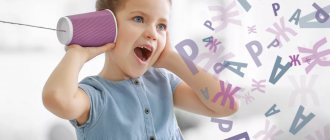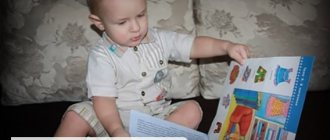Definition
Many researchers such as I.M. Sechenov, P.F. Lesgaft, L.S. Vygotsky, N.P. Wiseman, U. Kisling and other famous personalities have studied the sensory development of children. They all came to the conclusion that the senses are necessary for normal interaction with the outside world, speech development and motor sphere.
The author of this concept, Gene Ayres, characterized it as an analysis of the received sensations from the senses for their further application. If the process proceeds normally, then the brain can use the information received to form a model of behavior and perceive the surrounding world.
L. S. Vygotsky can be considered one of the founders of the use of integration in teaching. He believed that it was necessary to engage intact processes and activate compensatory capabilities.
W. Kisling believes that it is impossible to focus on the development of just one type of sensitivity. Therapy must be comprehensive so that a person can respond adequately to external and internal stimuli.
Sensory integration is the basis for further successful mastery of more complex mental operations and rules of behavior in society.
In psychology, this concept is considered in two aspects:
- the first is related to its significance in human life. This is an important neurological process that allows you to correctly sense your body in space and makes it possible to control your actions. Sensory integration promotes holistic perception;
- the second aspect is associated with therapy, the goal of which is to teach a person to interact with the environment and process the information received.
Therefore, a specialist must know not only the patterns of psychological development, but also the peculiarities of the functioning of the sensory and nervous systems. Only then can you create an effective program for complex therapy.
Disadvantages of the sensory integration method
A sensory integration specialist guides the child at the initial stage, notes all changes, but in the future, this is a long process that must be supported by parents, so it is important for them to learn the basics of the technique and continue to work with the child. Sensory integration - disadvantages of the method:
- not recommended for children with mild intellectual disabilities;
- the child does not always master the desired skill in the process;
- a child, having received knowledge about interaction with objects, must independently connect it all together with his body, learn to draw conclusions, which also does not always work.
Application area
Sensory integration is a method that allows you to solve several problems simultaneously. Therefore, it is widely used by specialists in various fields.
| Application area | What is it used for? |
| Defectology | Sensory integration therapy is mandatory when working with children with ASD or cerebral palsy, as well as other developmental and emotional-volitional disorders |
| Speech therapy | Exercises from this technique are used to work with children with alalia, complex forms of dysarthria, rhinolalia |
| Neurophysiology | Sensory integration therapy helps in overcoming dyslexia and dysgraphia. Exercises also normalize muscle tone and the emotional-volitional sphere. |
| Psychotherapy | Experts use this method to overcome anxiety and phobias |
| Rehabilitation | Restoring sensation after injury |
| Pedagogical activity | Teachers can use some exercises to stimulate mental activity and normalize the child’s behavior |
There are no separate psychological schools of sensory integration therapy. Some experts are of the opinion that during a lesson you should try to use all senses. Others believe that the method is more effective if it focuses on a specific sensory system. It is necessary to draw up a program taking into account the diagnosis and individual characteristics of the child.
Indications for use
Sensory integration is an important component of normal child development. Thanks to the ability to analyze data received from the senses, he can adequately respond to changes in the surrounding world.
Sensory integration is used for sensory disorders
But there are deviations when a child has a sensory integration disorder:
- autism spectrum disorders;
- dyslexia and dysgraphia - a violation of the development of writing and reading skills;
- problems with posture, scoliosis;
- the presence of phobias, neuroses;
- disorders of speech development and motor sphere;
- hyperactivity and hypoactivity;
- cerebral palsy;
- rehabilitation period after injuries;
- Down syndrome.
But it is possible to accurately determine whether a child needs this therapy only after diagnosis.
However, parents can look out for the following signs that may be symptoms of sensory integration disorder:
- increased or decreased sensitivity to various environmental factors;
- unpleasant sensations upon tactile contact with objects of certain textures and consistencies;
- motor impairments – inability to hold a pen or spoon, poor coordination of movements and other signs;
- difficulties in mastering reading and writing skills;
- excessive or decreased physical activity;
- muscle tone disorders;
- difficulties in mastering the right and left sides;
- difficulty understanding complex structures and performing actions in a certain sequence;
- disturbances of the emotional-volitional sphere;
- increased fatigue;
- limiting social contacts;
- delay in speech development.
These are the most common signs that occur with sensory integration disorder. But only a specialist can determine the exact cause of their appearance after diagnostics.
Diagnostics
Diagnostics to identify sensory disorders must be carried out in the first three years of life in order to prepare the baby for further education. To identify these problems, a special test is used, the questions of which are answered by parents.
While processing the answers, specialists can evaluate the child’s behavior on a 5-point scale. Then the data is correlated with the table data and the result is obtained. The disadvantage of this test is the difficulty of its use for diagnosing preschool children.
If the data obtained is not enough, then additional examination is used to check the functioning of the sensory organs. They also offer tasks to assess social activity and the psycho-emotional sphere.
Essence and basic principles
Sensory integration is a set of measures to improve the nervous system’s perception of incoming signals from the senses. The approach of the founder of this therapy, Anne Jean Ayres, has a neurobiological basis. The advantage of the methodology she developed is the possibility of its application by various specialists.
The therapy proposed by Ayres is based on the following principles:
- sensory sensations are necessary for further development and learning;
- To quickly adapt and master new skills, you need a developed understanding and analysis of the sensory sensations received;
- quickly overcoming stressful situations and successfully mastering new skills is necessary for the normal development of sensory integration of the nervous system;
- creating favorable conditions for the development of sensory perception normalizes the child’s behavior;
- successful development of new skills is possible only in the case of adequate answers to simpler tasks;
- the stronger the child’s motivation to achieve his goal, the greater the chance that he will cope better and faster with difficulties;
- The main aspect in sensory integration therapy is that the adult must take into account the child's development;
- In therapy, the leading activity is play. It is best if the therapist only offers the child one form of activity or another, and he chooses one that suits his interests;
- the specialist must set tasks that are adequate to the child’s capabilities;
- the success of therapy is determined by how quickly the child begins to respond to tasks that previously caused him difficulty;
- the entire therapy program is based on an integrated approach, taking into account individual characteristics;
- individual perception systems need to be activated so that others have less work to do;
- tasks need to be adapted to the child’s capabilities;
- All exercises must be selected so that they do not harm the health and emotional well-being of the child.
All these principles, formulated by Jean Ayres, underlie sensory integration therapy by other authors. The main difference between the methods is the selection of exercises and tasks.
P.F. Lesgaft believed that regular exercise of the senses was of great importance. They stimulate mental and physical activity. In this case, tasks must involve the entire sensory system.
W. Kisling believes that sensory integration therapy should be periodic and consist of long sessions. This approach is due to the fact that this work does not imply achieving short-term results. It is also necessary to take breaks between courses so that the child has time to assimilate the material received before starting to learn new information.
Pauses between periods of exercise can be compared to work with stimulation of the senses. The brain also takes time to process the received data.
W. Kisling gives recommendations on how to properly organize correctional and developmental work:
- you need to minimize all distractions;
- to maintain concentration, you should not give more than one task at a time;
- it is necessary to create all conditions for a favorable emotional environment;
- you need to remove all things that contribute to overload of the visual analyzer;
- it is also worth eliminating all factors that can irritate the olfactory analyzers;
- In the room where the lesson is taking place, you need to allocate a place so that the child can rest.
Thus, we can conclude that W. Kisling places special emphasis on concentrating in class. Therefore, before carrying out them, it is better to leave those items that will be needed to complete the tasks.
Inventory
For sensory integration you need to prepare the necessary equipment. This is necessary for effective work. In specialized educational institutions and children's centers, a special room is equipped for such therapy.
The following simulators are used in classes:
- hammocks, platforms for normalizing the functioning of the vestibular apparatus;
- “dry” pool for the development of tactile sensations;
- sensory walking track - also for developing tactile sensations and improving coordination;
- tubes with bubbles to train the visual analyzer and improve concentration;
- a mirror for carrying out exercises for the development of finger and articulatory motor skills and training of visual perception;
- containers with sand, cereals and other materials for the safety of hands and feet - to increase tactile experience;
- a water mattress is needed to develop tactile sensations, stimulates the imagination and relieves muscle tension;
- busy boards for the development of fine motor skills;
- blankets and pillows to create a relaxing emotional environment.
The complex of sensory integration therapy exercises will vary slightly depending on the individual characteristics of the child.
Sensory Integration Equipment
Sensory integration classes are conducted on special equipment, which must be safe for the child, attractive and bright. Sensory therapy and integration includes the use of the following equipment:
- cerebellar stimulation simulator (balancing) – designed for children who have problems with coordination and motor skills;
- tactile paths – different surfaces of the paths develop a sense of balance;
- sensory light toys of different colors - they glow in the dark and help stimulate the child’s auditory, visual and tactile systems.
- Busyboards - developed according to the Montessori system, are boards with many different buttons, locks, clothespins, laces, very attractive for kids, develop imagination, fine motor skills and intelligence.
- Weighted blankets and pillows for relaxation - help hyperactive children calm down and fall asleep, the child feels the effect of being hugged.
Set of exercises
Sensory integration disorder is often present in children with complex speech defects. Therefore, speech therapists actively use this technique in their work. To perform the exercises, use bodyboards or pictures with different surfaces and three-dimensional contours.
In speech therapy
The speech therapist asks the child to do the following exercises:
- find among the pictures images that match each other according to certain characteristics;
- name what is depicted on them out loud;
- find pictures whose names contain a certain sound;
- imitation of animal voices;
- “singing” vowel sounds.
The use of sensory material promotes better assimilation of the material, which is a secondary prevention of such disorders.
For autism
Sensory therapy is one of the many methods that specialists use to correct autism. But its effectiveness has not yet been proven. The main task of its use is to inhibit nervous processes and relieve tension.
The specialist uses the following exercises:
- arrangement of objects by color, shape, size. This game stimulates tactile sensations and the functioning of the visual analyzer;
- various lacing options to improve motor skills, spatial orientation skills and increase concentration;
- active exercises to train coordination and vestibular apparatus;
- tracing the contours of an object;
- drawing with hands without brushes;
- sand therapy.
Also, in classes with children with ASD, various materials are used to stimulate all senses. But when training the olfactory and tactile analyzers, it is necessary to take into account the individual characteristics of the child in order to eliminate factors that irritate him.
With cerebral palsy
One of the characteristics of children with cerebral palsy is the immaturity of their sensory systems, so they cannot adequately assess their sensations.
Therefore, specialists actively use equipment and exercises for sensory integration in their work:
- swinging platforms, hammocks, tunnels for stimulation of the vestibular apparatus and motor training;
- “dry” pool to stimulate tactile sensations;
- walking on special massage paths and mats;
- use of bodyboard and lacing;
- tapping the rhythm - to stimulate the auditory analyzer;
- guessing an object by smell using aromatic oils.
With the help of sensory integration therapy, specialists also correct behavioral problems. Music is often used in classes to create a relaxing environment. Also, during exercises, it is necessary to give the child pauses so that he comprehends the information and rests from vigorous activity.
Correction at home
This therapy can also be carried out at home by choosing exercises that do not require parents to have special skills:
- dancing, running and walking around objects placed at a certain distance from each other;
- modeling from plasticine;
- games with balloons;
- playing with cereals and other bulk products;
- various types of jumps, it is best if you can purchase a trampoline;
- games for sorting objects according to various criteria;
- drawing in various ways - pencil, brushes, fingers.
All these exercises are aimed at stimulating all senses. Typically, home exercises are additional, enhancing the effect of a specialist’s correctional work.
Symptoms
Signs of sensory integration disorder can be divided into several groups:
- Tactile dysfunction
Aversion to touch, insufficient response to tactile sensations, distinguishing objects only by touch.
- Vestibular dysfunction
Hyperintensity of movements, hypointensity, low muscle tone, lack of coordination.
- Proprioceptive dysfunction.
Incorrect assessment of body position in space, weight, pressure, movement of muscles and joints. It is difficult for a special child to organize his movements; he seeks sensory experiences (he falls, stomps heavily when walking, roughly presses people and things towards him).
- Auditory dysfunction
An increased reaction to loud, sharp sounds means fear, anxiety, hysterics, refusal to listen to songs and music. Insufficient response to sounds - does not respond to being called by name, likes sounds that are too loud, does not remember songs or tunes well, needs frequent repetition of requests and poems.
- Oral dysfunctions
Defensive reaction - eating a small selection of foods, choking and being afraid to eat dense foods. Low response to oral signals - chews inedible objects, examines the object with the mouth, likes too sour, sweet, and spicy foods.
- Olfactory dysfunction
Excessive reaction to smells - refuses to eat because of the smell, gets irritated by the scent of perfume, ignores games if the room smells bad. Lack of reaction - cannot identify the smell and its source, completely ignores the unpleasant aroma, smells objects to study them.
- Visual dysfunction
Hyperintense reaction - avoids direct gaze, squints and cries in bright light, likes to play in dim lighting. Insufficient reaction - does not distinguish shapes, colors, writes in advance, draws too large or too small lines, shapes, has difficulty tracing a contour, putting together puzzles.
- Articulatory dysfunction
Does not identify the source of sound, does not recognize familiar voices, dyslexia, has difficulty formulating thoughts orally and in writing, slurred speech.
- Social dysfunction
It is difficult to find contact with peers, strangers, does not strive to communicate with family members, does not maintain dialogue.
- Emotional dysfunction
Impulsiveness, falling into frustration, works well with a speech therapist, teacher individually, in a group he remains silent, distracted, emotionally unstable.
- Gaming dysfunction
He cannot play without his mother, does not strive to play with peers, and performs the same action for hours.
- Self-regulation dysfunction
Irritability, fussiness, need for additional stimuli to calm down (thumb sucking, rocking, stroking), pattern.
- Introception (internal regulation)
Unpredictability of mood, feeling of extreme heat, cold at normal air temperatures, slow movements, increased heart rate and breathing for no apparent reason, inability to control the feeling of hunger and satiety.
On a note! In most children with integration disorders, damage to the brain structure is not detected during the diagnosis of the causes of the disease. Although dysfunction in behavior and sensations is associated with malfunctions in the work of its departments.
When to expect an effect
There are no exact dates for when to expect an effect from sensory integration therapy - it all depends on the structure of the defect and the individual characteristics of the child. But to achieve results, classes must be regular, and tasks must correspond to the age and capabilities of the child. Sometimes success can appear by the end of the first month of classes, depending on the complexity of the task.
When correcting complex defects, results may appear 3 months after the start of classes. For progress to appear, the exercises must be gradually made more complex, and the set of exercises must be selected so that they involve all the senses.
Sensory integration is one of the frequently used techniques in correctional work. This makes it possible to stimulate the functioning of the senses, so that in the future the child can successfully master writing and reading skills, and also successfully socialize in society. The advantage of this technique is that it can be used at home.








